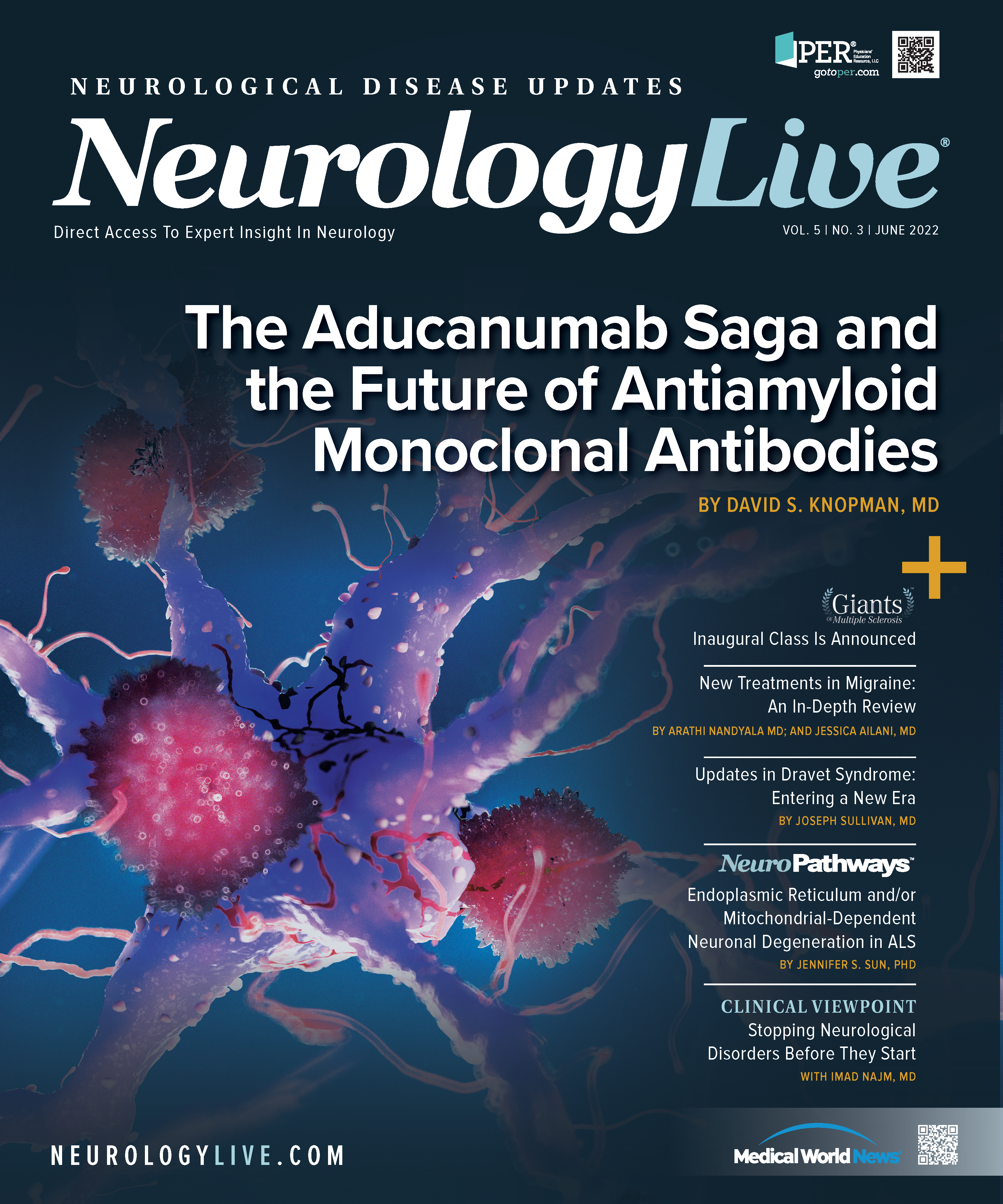Publication
Article
NeurologyLive
Achieving Greater Diversity in Dementia Research: A Call to Action
Achieving greater diversity in study populations is a focus of increasing scrutiny, priority, and funding in all medical research, including studies enrolling individuals on the continuum of prodromal Alzheimer disease, mild cognitive impairment, and Alzheimer disease.
R. Scott Turner, MD, PhD, FANA, FAAN

FINAL CENTERS FOR Medicare & Medicaid Services (CMS) decision regarding the anti–amyloid-ß (Aß) monoclonal antibody aducanumab-avwa (Aduhelm; Biogen Inc) for mild cognitive impairment and Alzheimer disease (MCI/AD) on April 7, 2022, provides coverage only with evidence development—namely, a requirement to further evaluate the clinical efficacy of aducanumab in a phase 4 trial,1 which David S. Knopman, MD, addresses in this issue of NeurologyLive®. Due to inadequate diversity in the agent’s 2 completed phase 3 studies, ENGAGE (NCT02477800) and EMERGE (NCT02484547), the CMS decision further stipulates that greater diversity must be achieved in the study population so that “patients are representative of the national population with MCI due to AD or mild AD dementia.”1 This diversity can be accomplished by increasing enrollment of individuals in underrepresented racial and ethnic groups (URGs).
In the US, individuals in URGs are defined as Black or African American, Hispanic/Latinx, Indigenous and Native American, Asian, Native Hawaiian and other Pacific Islander, and as other individuals of color (self-identified).2 To match the diversity of the US population,2 a goal of at least 31% enrollment from URGs is targeted in the phase 4 aducanumab trial, ENVISION (NCT05310071).
Achieving greater diversity in study populations is a focus of increasing scrutiny, priority, and funding in all medical research, including studies enrolling individuals on the continuum of prodromal AD, MCI, and AD. Although many individuals in URGs have a higher risk of developing AD, these same individuals may also be under- and misdiagnosed,3 underscoring the urgency of achieving greater health care access as well as research enrollment.
Charlyn Gomez, BS

To successfully create a more inclusive environment, we must consider the following questions.
How will large numbers of interested and eligible individuals and their study partners from URGs be screened, recruited, and retained in clinical research? The number of individuals required to enroll in typical phase 3 trials of AD is large—in part because of variability of outcome measures (of cognition, function, and behavior, or their composite), an approximate 20%-per-year dropout rate, and a minimum trial duration of 12 to 18 months (much longer for prevention studies). Given the high screen-fail rate of approximately 80% for many modern studies (by design), far greater numbers of individuals must be screened to identify potential candidates to enroll. In other words, the funnel of potential research candidates must be much wider and larger. Our current track record is dismal, with URGs typically comprising less than 5% of study participants.4
Which biomarkers of prodromal AD/MCI/AD may be employed to screen and identify eligible individuals—including those from URGs—for clinical trials? Driven by the development of increasingly sensitive methods such as single-molecule array technology, the field of dementia research is rapidly discovering and validating plasma biomarkers useful for screening. In selected individuals, these results may be followed by more established, well-studied biomarkers (either costly positron emission tomography [PET] neuroimaging or invasive cerebrospinal fluid [CSF] proteomic analyses). Neither PET imaging nor CSF collection is feasible for population screening because neither is scalable to match even current demands. With safe and effective disease-modifying therapies now on the horizon, demand will only further outstrip supply. Furthermore, cost will be prohibitive and may disproportionately exclude individuals, including those in URGs, facing socioeconomic barriers.
What is known about plasma biomarkers of prodromal AD/MCI/AD? Are there differences in plasma biomarker results from URGs compared with other populations? Biomarker cutoffs are typically defined in cohorts of non-Hispanic White individuals and then applied to all individuals. Yet applying cutoffs established for non-Hispanic White individuals to groups in which the biomarker has not been studied may be misleading—potentially resulting in higher proportions of false positives (with additional testing and misdiagnosis) and false negatives (with lack of appropriate treatment and research opportunities).
The PrecivityAD test (C2N Diagnostics)5 is available clinically but not yet covered by third-party payers. This assay measures the plasma Aβ42/Aβ40 ratio and determines the APOE proteotype (in plasma) by mass spectrometry. When combined with age of the individual, a derived probability score predicts the likelihood of a positive amyloid PET scan. Studies of plasma biomarkers in URGs compared with non-Hispanic White individuals are in their infancy. For example, a recent study compared plasma biomarkers of AD in a group of Black individuals and a group of age-matched non-Hispanic White individuals (mostly cognitively normal; n = 76 per group). With the plasma Aβ42/Aβ40 ratios via PrecivityAD, the population studied did not affect the probability of a positive CSF or amyloid PET scan. However, regarding the level of plasma tau phosphorylated at threonine 181 (p-tau181), p-tau231, or neurofilament light via mass spectrometry, Black individuals had a significantly lower probability of a positive CSF or amyloid PET scan (odds ratio, 0.3).6 Applying cutoffs of plasma p-tau established for non-Hispanic White individuals would lead to misclassification of a large proportion of Black individuals. Clearly, additional studies of plasma biomarkers of MCI/AD, including comparisons among groups, with larger sample sizes are sorely needed to establish cutoffs. These results also raise new questions regarding the potential genetic or environmental factors leading to different biomarker cutoffs among groups.
Achieving adequate diversity, equity, and inclusion in prodromal AD/MCI/AD research will enable answers to questions regarding potential group differences in biomarkers (as above), as well as in drug safety and efficacy. Participant and study partner recruitment and retention in medical research, including dementia research, must advance as a science—testing hypotheses regarding motivations, barriers, and strategies. Best practices, which appropriately consider potential ethnoracial differences, must then be implemented widely to meet diversity goals. The staff of research programs must also reflect the diversity of the population targeted for enrollment.
Maintaining the status quo is not an option. Once validated and approved, new biomarkers and new treatments in the pipeline will potentially benefit individuals in all groups, including those in URGs.
REFERENCES
1. Jensen TS, Chin J, Baldwin J, et al. Decision memo: monoclonal antibodies directed against amyloid for the treatment of Alzheimer’s disease. Centers for Medicare & Medicaid Services. April 7, 2022. Accessed May 10, 2022. https://www.cms.gov/medicare-coverage-database/view/ncacal-decision-memo.aspx?proposed=N&ncaid=305
2. National Science Foundation. Women, minorities, and persons with disabilities in science and engineering. 2017. Accessed May 10, 2022. https://nsf.gov/statistics/2017/nsf17310/digest/introduction
3. Data showing racial disparities in Alzheimer’s disease diagnosis between Black and White research study participants. National Institute on Aging. December 16, 2021. Accessed May 10, 2022. https://www.nia.nih.gov/news/data-shows-racial-disparities-alzheimers-disease-diagnosis-between-black-and-white-research
4. Faison WE, Schultz SK, Aerssens J, et al. Potential ethnic modifiers in the assessment and treatment of Alzheimer’s disease: challenges for the future. Int Psychogeriatr. 2007;19(3):539-558. doi:10.1017/S104161020700511X
5. The PrevicityAD test: advanced diagnostics in Alzheimer’s disease. PrevicityAD. Accessed May 10, 2022. https://precivityad.com
6. Schindler SE, Karikari TK, Ashton NJ, et al. Effect of race on prediction of brain amyloidosis by plasma Aβ42/Aβ40, phosphorylated tau, and neurofilament light chain. Neurology. Published online April 21, 2022. doi:10.1212/WNL.0000000000200358





